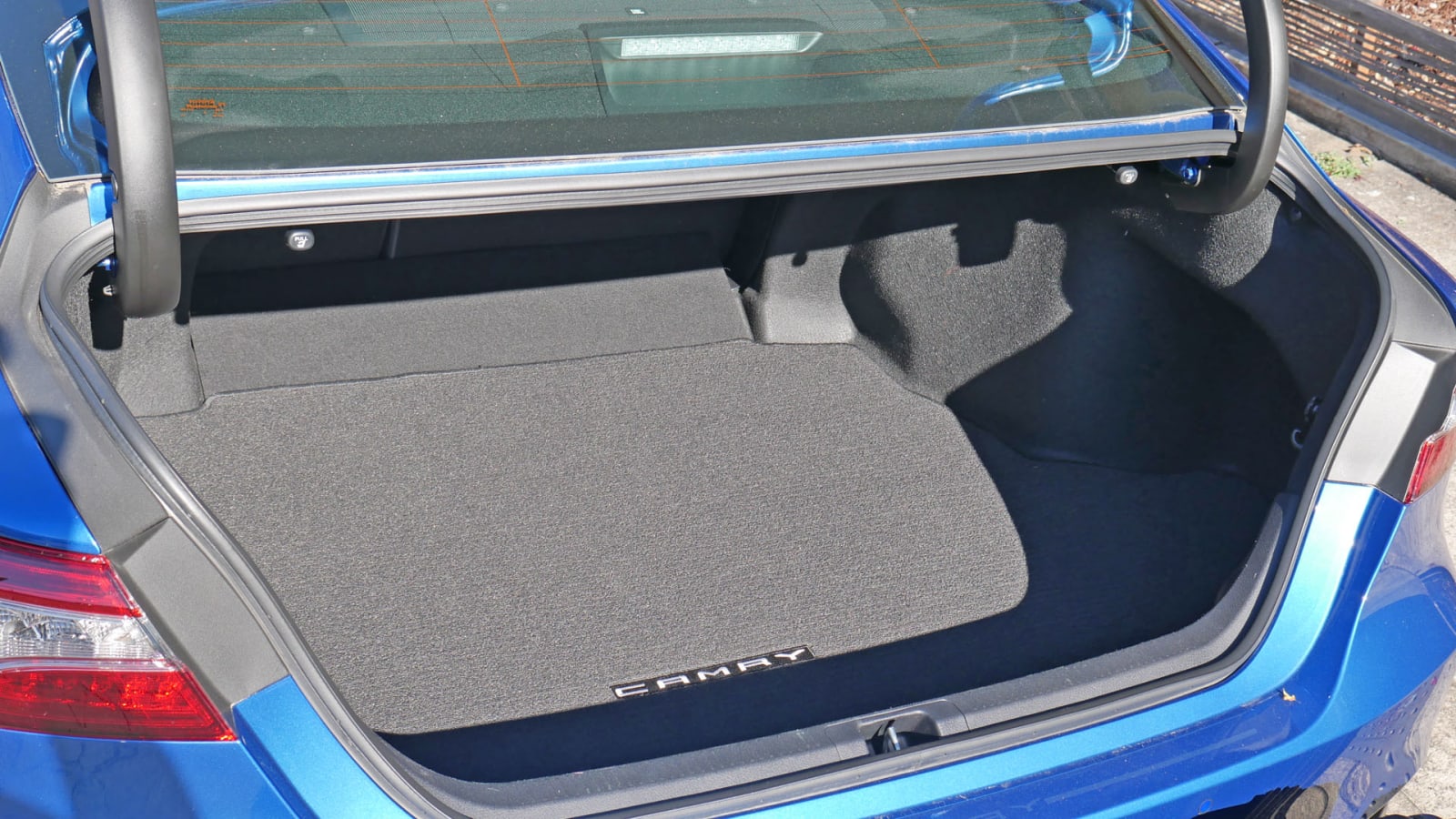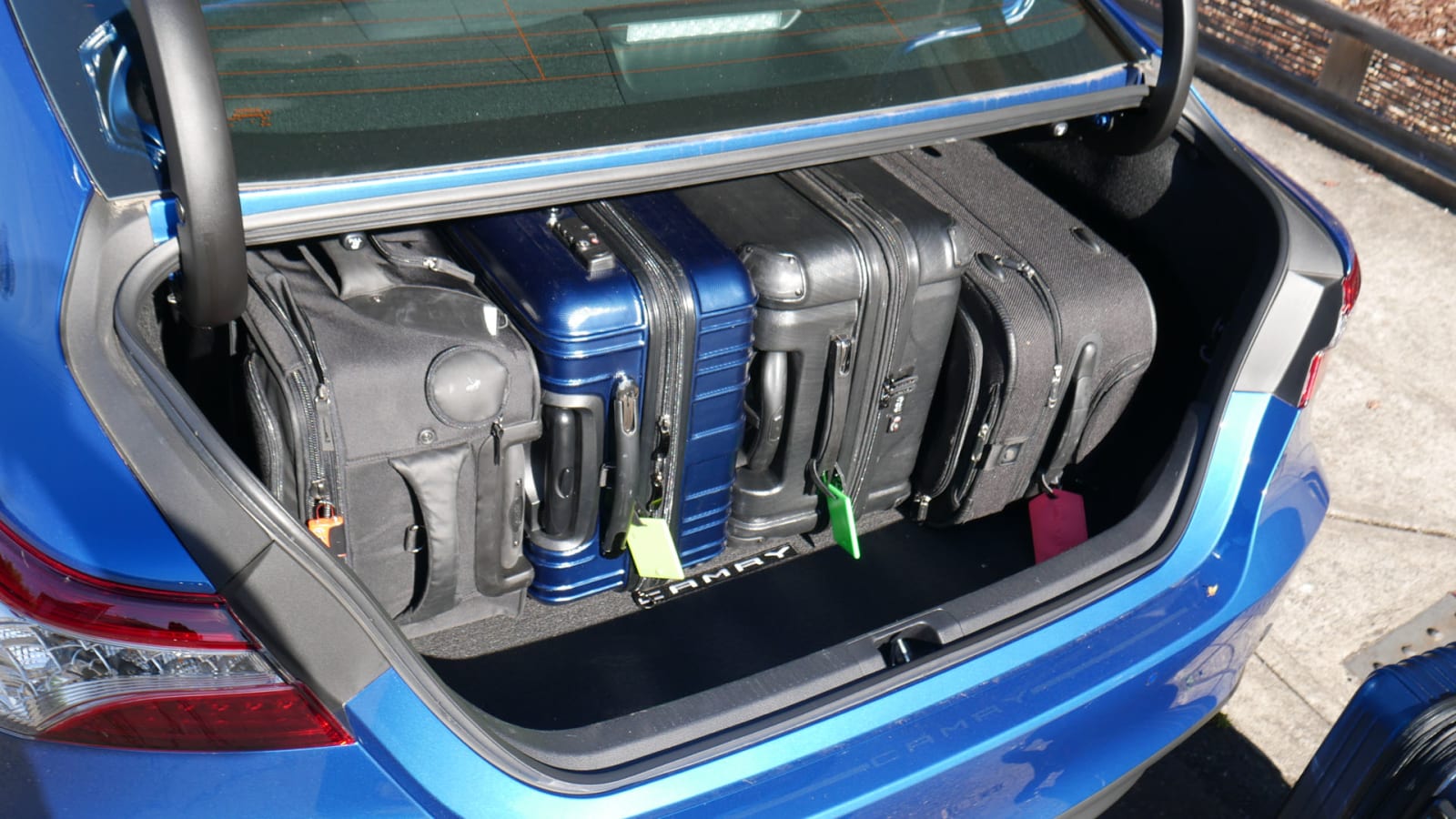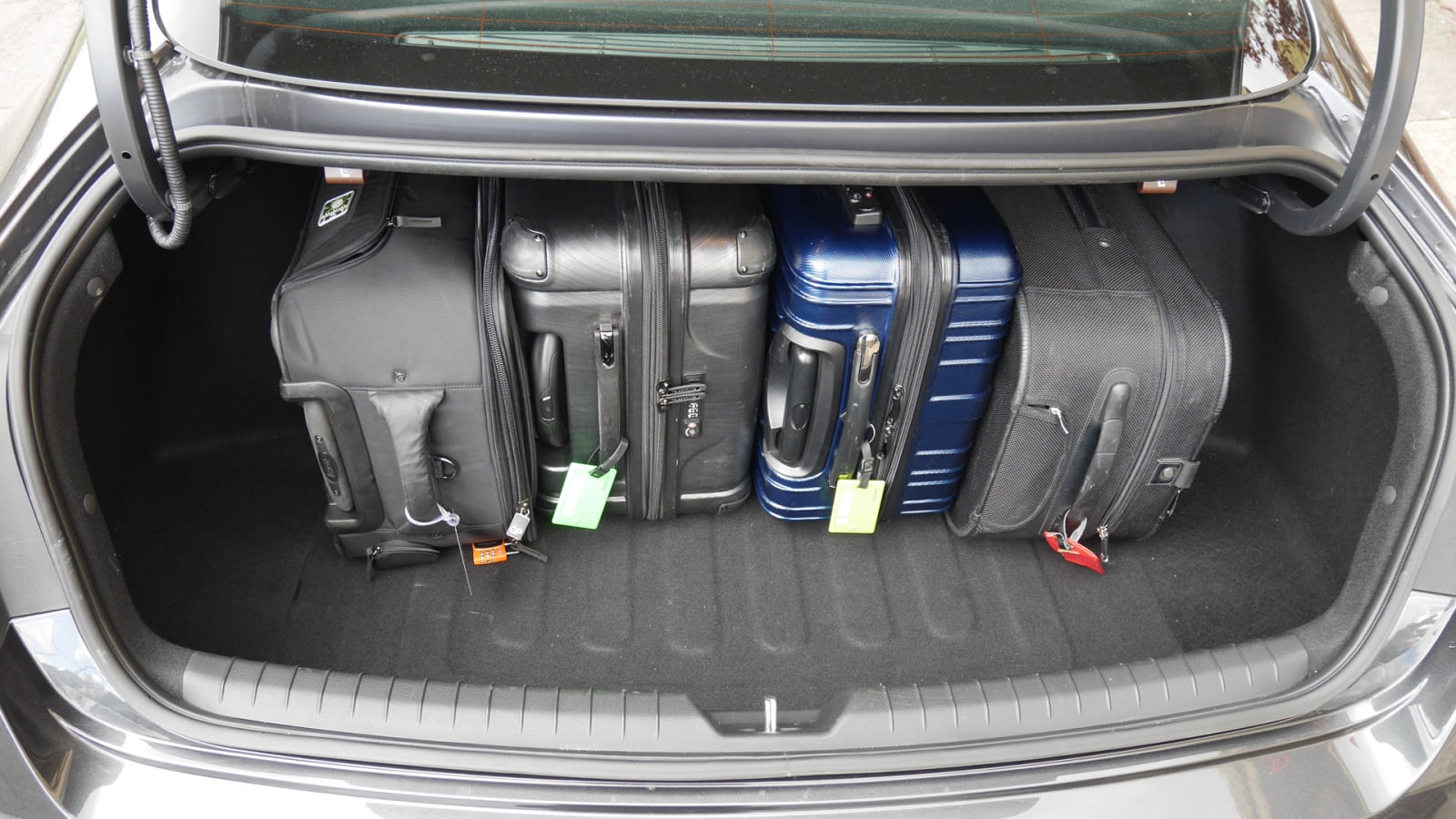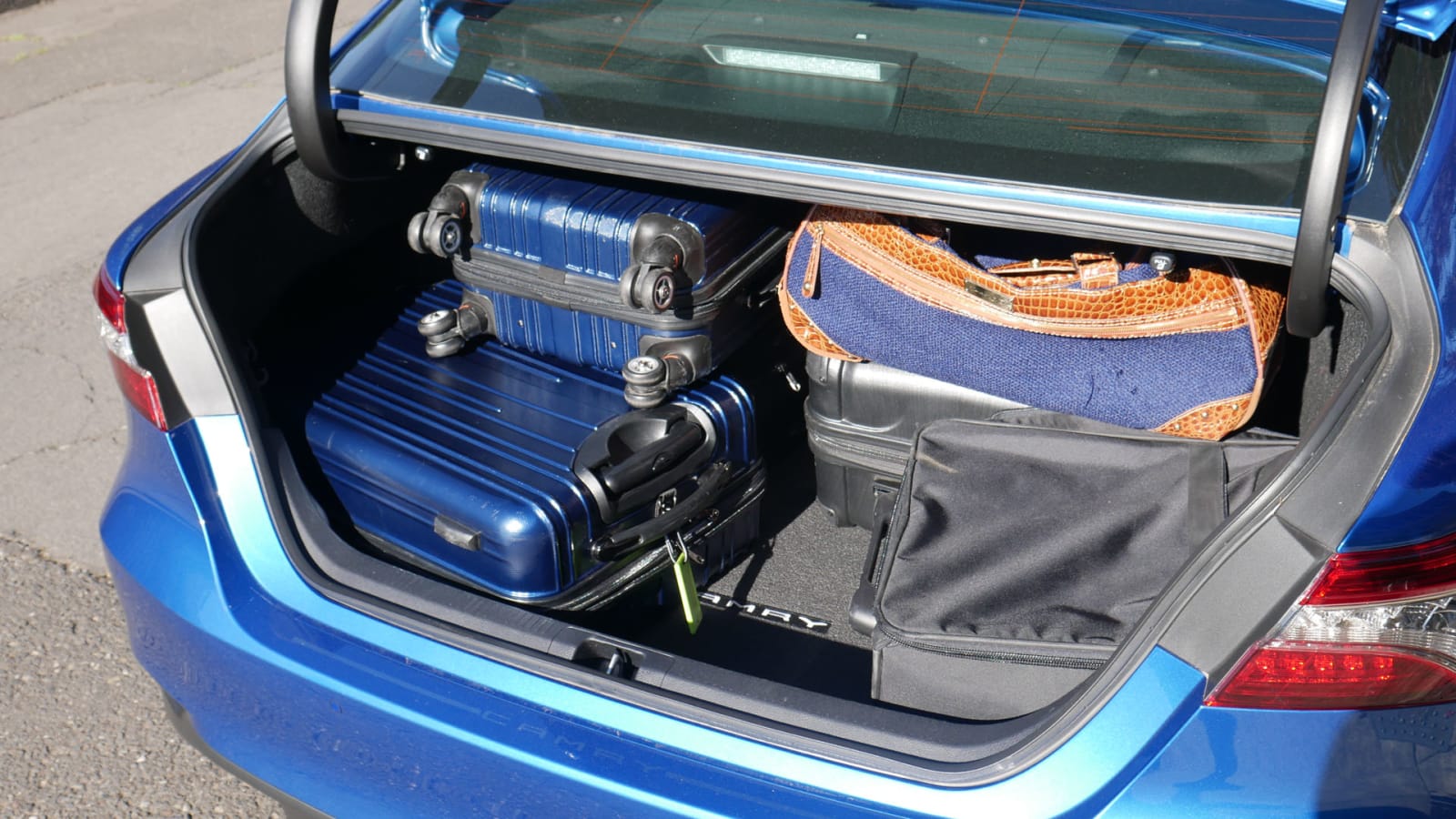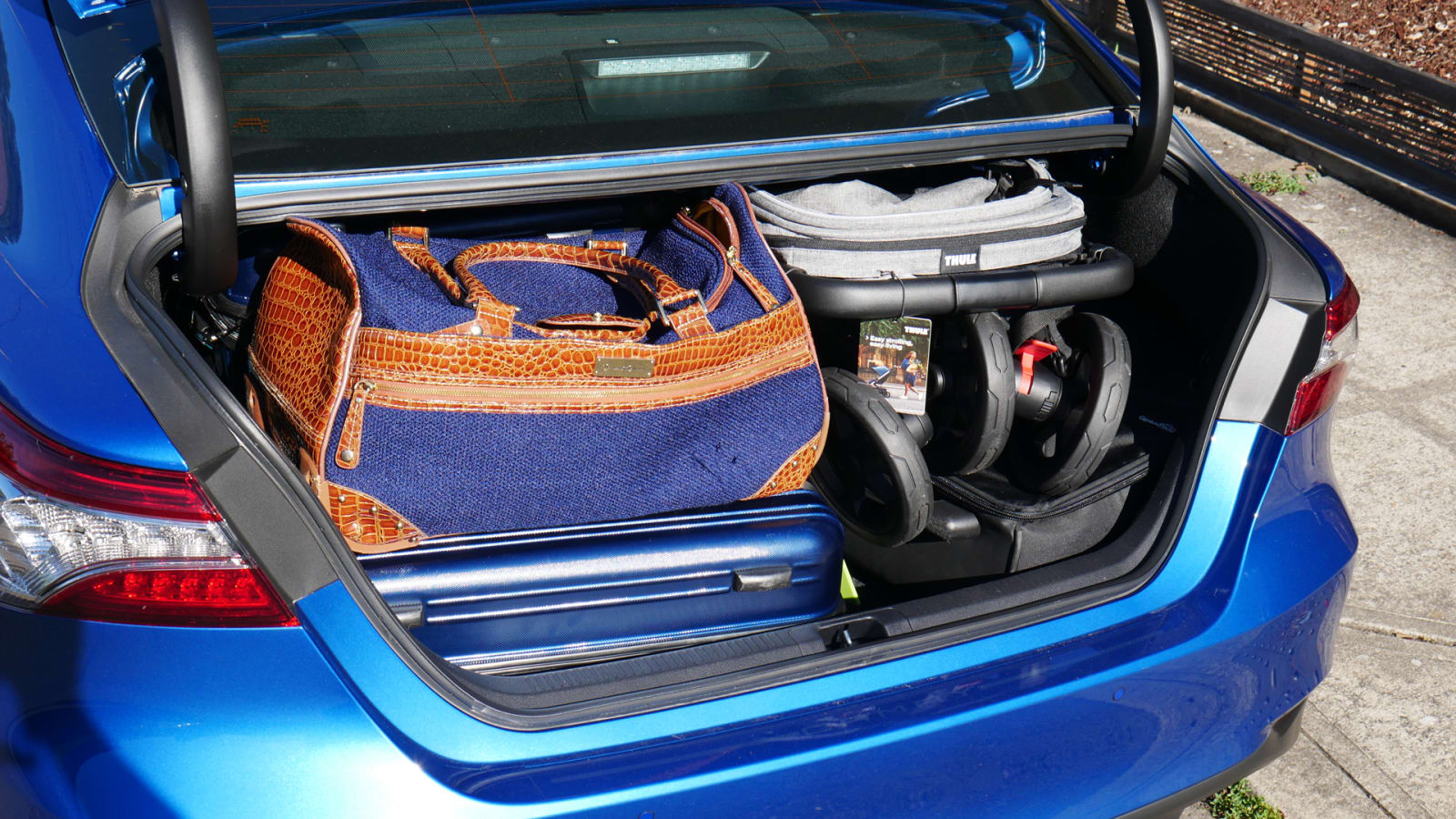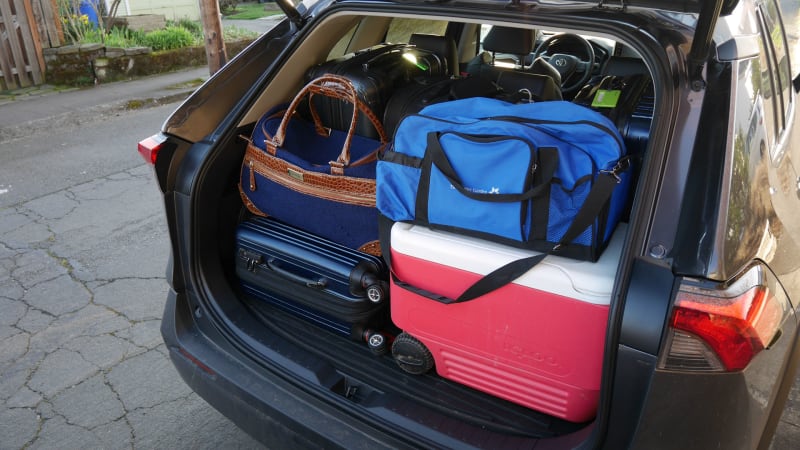When it comes to packing in luggage, I've discovered time and again that compact SUVs are rarely better than the midsize family sedans they've been supplanting in the driveways of so many Americans. There are further pros in the column for sedans, and certainly cons as well, but let's just stick to luggage since that's what the headline says this post is about.
The 2020 Toyota Camry is one such sedan, and this is specifically a Hybrid XLE. In the past, that would've meant this Camry had less cargo capacity than gas-only models since the car's battery pack resided under the trunk. That's not the case with the current generation, which carries its battery under the back seat. Besides providing for the same 15.1 cubic-feet of trunk volume as the gas Camry trim levels, that battery position also makes for more balanced and planted handling (though the back seat loses a smidgen of headroom).
Let's see how much that 15.1 cubic-feet translates to in terms of actual luggage, while dropping in a few comparisons to other family sedans and a compact SUV along the way.
As in every luggage test I do, I use two midsize roller suitcases that would need to be checked in at the airport (26 inches long, 16 wide, 11 deep), two roll-aboard suitcases that just barely fit in the overhead (24L x 15W x 10D), and one smaller roll-aboard that fits easily (23L x 15W x 10D). I also include my wife's fancy overnight bag just to spruce things up a bit (21L x 12W x 12D).
To start, I stacked the four biggest suitcases between the wheel wells. They all fit, though the one on the right there clearly got snagged on something, cause all fit flush when I did this test for the 2018 midsize sedan comparison. You can see how this compares to the Hyundai Sonata and Volkswagen Passat below. The Camry has less space on paper than most competitors and it seems the main reason is that the trunk isn't as long.
Like everything I've tested in this segment, the Camry has "egg-crusher" hinges. They aren't housed within channels as in the Subaru Legacy, but they also don't dip too far down and cause an impediment as those in the Passat.
OK, now let's see how much of my luggage in total fits inside.
It all fits, and although you have to be a little loose in the arrangement, there is an abundance of space left over. This sure seems comparable to the Legacy and Sonata, which had room left over for extra duffel bags or a portable playpen.
For bonus space in the Camry ...
I turned to my new Thule Spring stroller. When folded it's one of the most compact regular strollers on the market, so know that this probably isn't terribly representative.
Nevertheless, here it is by itself for some context.
And finally, as promised, here is the Camry versus the vehicle seemingly most likely to steal its lunch: the RAV4.
Left is how much space there is with the cargo cover in place. Everything fits, but for a stroller or whatever, it would have to go on top of the stack, potentially blocking rearward visibility.
To the right is how much fits if you remove the cargo cover and therefore can reorganize the bags. The extra space here can be taken up with a 38-quart cooler and a duffel bag, which is definitely larger than the Thule Spring, but possibly comparable to a bigger, more typical stroller.
In other words, there is indeed more usable cargo space in a RAV4, but not that much more. Also, keep in mind that the RAV4 is one of the most voluminous in the segment. Don't write off sedans yet.
Related Video:
[ad_2]
Source link

